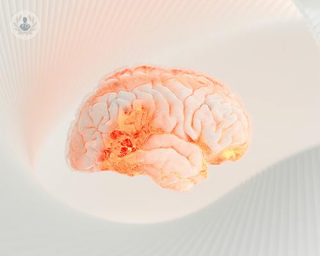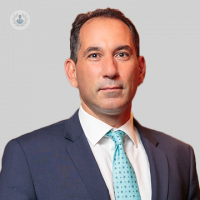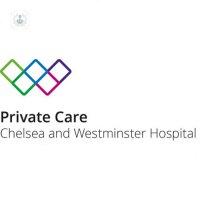
What are neuroendocrine tumours?
Neuroendocrine tumours (NETs) are a rare form of tumours that appear in the cells of the endocrine cell system. They can be cancerous (malignant) or non-cancerous (benign). There are different types of NETs, and the symptoms range from breathing difficulty, digestive disorders or hormone imbalances.
Where do neuroendocrine tumours appear in the body?
NETs can occur anywhere on the body but mostly occur in the lungs, appendix, small intestine, rectum and pancreas.
What are the symptoms of neuroendocrine tumours?
To begin with, neuroendocrine tumours do not always cause symptoms. General signs of a neuroendocrine tumour include:
- Pain from a growing tumour
- A lump that you can feel under the skin
- Feeling unusually fatigued
- Weight loss without trying
In cases where NETs produce excess hormones, it may lead to the following symptoms:
- Skin flushing
- Frequent urination
- Dizziness
- Shakiness
- Skin rash
How is a neuroendocrine tumour diagnosed?
The tests used to determine the NET depends on its location within the body. Your doctor will make a physical examination and look for any swollen lymph nodes. A blood and urine test will determine if there are any excess hormones, which are sometimes produced by NETs.
Imaging tests such as ultrasounds, CT or MRI scans will be required in order to create pictures of the tumour. In some cases of NETs, images are sometimes created using positron emission tomography (PET), which uses a radioactive tracer that is injected into the vein.
Finally, your doctor may perform a biopsy by removing a sample of cells from the site of the tumour.
What are the treatment options for neuroendocrine tumours?
Once the tumour has been diagnosed, the treatment process will depend on the location, stage and size of the tumour. Surgery will be required in order to remove the tumour and some of the healthy tissue that surrounds it.
Chemotherapy and radiotherapy may be used alongside surgery if there is a risk that the NET will return after surgery. These therapies may also be used if surgery is not an option for the patient.
Some targeted therapies known as everolimus (taken as a tablet) and sunitinib (a capsule) can also be used if surgery is not possible or if the NET is getting worse.
You may also be given medication called somatostatin analogues, such as octreotide or lanreotide, to stop the body from producing too many hormones and to slow the progression of the disease.
03-01-2017 01-05-2024Neuroendocrine tumours
Dr Helen Spoudeas - Paediatric endocrinology, diabetes & metabolism
Created on: 03-01-2017
Updated on: 01-05-2024

What are neuroendocrine tumours?
Neuroendocrine tumours (NETs) are a rare form of tumours that appear in the cells of the endocrine cell system. They can be cancerous (malignant) or non-cancerous (benign). There are different types of NETs, and the symptoms range from breathing difficulty, digestive disorders or hormone imbalances.
Where do neuroendocrine tumours appear in the body?
NETs can occur anywhere on the body but mostly occur in the lungs, appendix, small intestine, rectum and pancreas.
What are the symptoms of neuroendocrine tumours?
To begin with, neuroendocrine tumours do not always cause symptoms. General signs of a neuroendocrine tumour include:
- Pain from a growing tumour
- A lump that you can feel under the skin
- Feeling unusually fatigued
- Weight loss without trying
In cases where NETs produce excess hormones, it may lead to the following symptoms:
- Skin flushing
- Frequent urination
- Dizziness
- Shakiness
- Skin rash
How is a neuroendocrine tumour diagnosed?
The tests used to determine the NET depends on its location within the body. Your doctor will make a physical examination and look for any swollen lymph nodes. A blood and urine test will determine if there are any excess hormones, which are sometimes produced by NETs.
Imaging tests such as ultrasounds, CT or MRI scans will be required in order to create pictures of the tumour. In some cases of NETs, images are sometimes created using positron emission tomography (PET), which uses a radioactive tracer that is injected into the vein.
Finally, your doctor may perform a biopsy by removing a sample of cells from the site of the tumour.
What are the treatment options for neuroendocrine tumours?
Once the tumour has been diagnosed, the treatment process will depend on the location, stage and size of the tumour. Surgery will be required in order to remove the tumour and some of the healthy tissue that surrounds it.
Chemotherapy and radiotherapy may be used alongside surgery if there is a risk that the NET will return after surgery. These therapies may also be used if surgery is not an option for the patient.
Some targeted therapies known as everolimus (taken as a tablet) and sunitinib (a capsule) can also be used if surgery is not possible or if the NET is getting worse.
You may also be given medication called somatostatin analogues, such as octreotide or lanreotide, to stop the body from producing too many hormones and to slow the progression of the disease.


Neuroendocrine tumours (NETs): What are my treatment options?
By Dr Florian Wernig
2025-02-01
Neuroendocrine tumours (NETs) are abnormal growths that arise from neuroendocrine cells and typically appear in the gastrointestinal tract, pancreas and bronchi. Dr Florian Wernig, leading consultant endocrinologist from London, walks us through the typical symptoms of NETs and what your treatments options are if you have received a diagnosis. See more


An introduction to neurology
By Dr Tahira Choudry
2025-02-01
Neurology is a fascinating and vital branch of medicine that focuses on the nervous system, which includes the brain, spinal cord, and peripheral nerves. As complex as this field might seem, understanding the basics can empower patients to better navigate their neurological health. Esteemed consultant neurologist Dr Tahira Choudry discusses the key aspects of neurology to help you become more familiar with how this intricate system works and what it means for your health. See more


Neuroendocrine tumours: what is the survival rate?
By Professor Christos Toumpanakis
2025-01-31
Neuroendocrine tumours (NETs) develop from cells of the neuroendocrine system and can be located in the digestive system, lungs and other organs in the body. We spoke to leading gastroenterologist Dr Christos Toumpanakis about the condition, including the treatment options available and the survival rate following a diagnosis of NETs. See more


Understanding neuroendocrine tumours
By Professor Martyn Caplin
2025-01-28
Diving into neuroendocrine tumours (NETs), we find a complex group of cancers originating from scattered endocrine cells. Although often symptomless, they can occasionally cause hormonal disturbances. Commonly located in the gastrointestinal tract, pancreas, and lungs, NETs are more prevalent than commonly believed, outnumbering cancers like gastric carcinoma and myeloma. In his latest online article, Professor Martyn Caplin gives us his insights. See more
Experts in Neuroendocrine tumours
-
Professor Christos Toumpanakis
GastroenterologyExpert in:
- Neuroendocrine tumours
- Acid reflux
- Chronic diarrhoea
- Inflammatory bowel disease (IBD)
- Dysphagia
- Coeliac disease
-
Dr Florian Wernig
Endocrinology, diabetes & metabolismExpert in:
- Pituitary tumours
- Adrenal gland disorders
- Thyroid disorders
- Neuroendocrine tumours
- Hyperparathyroidism
- Polycystic ovary syndrome (PCOS)
-
Dr Richard Sheaves
Endocrinology, diabetes & metabolismExpert in:
- Thyroid disorders
- Adrenal gland disorders
- Neuroendocrine tumours
- Diabetes
- Insulin pump
- Diseases of the pituitary and hypothalamus
-
Dr Sheharyar Qureshi
Endocrinology, diabetes & metabolismExpert in:
- Diabetes
- Infertility
- Insulin pump
- Thyroid disorders
- Neuroendocrine tumours
- Diseases of the pituitary and hypothalamus
-
Mr Deep J Malde
SurgeryExpert in:
- Gallbladder surgery
- Liver cancer
- Pancreatic cancer
- Pancreatitis
- Cysts
- Neuroendocrine tumours
- See all

The Harborne Hospital - part of HCA Healthcare
The Harborne Hospital - part of HCA Healthcare
Mindelsohn Way, B15 2FQ
No existe teléfono en el centro.
By using the telephone number provided by TOP DOCTORS, you automatically agree to let us use your phone number for statistical and commercial purposes. For further information, read our Privacy Policy
Top Doctors

Bath Clinic - part of Circle Health Group
Bath Clinic - part of Circle Health Group
Claverton Down Road, Combe Down, Bath BA2 7BR
No existe teléfono en el centro.
By using the telephone number provided by TOP DOCTORS, you automatically agree to let us use your phone number for statistical and commercial purposes. For further information, read our Privacy Policy
Top Doctors

Private Care at Chelsea and Westminster Hospital
Private Care at Chelsea and Westminster Hospital
Chelsea and Westminster Hospital, 369 Fulham Rd.
No existe teléfono en el centro.
By using the telephone number provided by TOP DOCTORS, you automatically agree to let us use your phone number for statistical and commercial purposes. For further information, read our Privacy Policy
Top Doctors
-
The Harborne Hospital - part of HCA Healthcare
Mindelsohn Way, B15 2FQ, BirminghamExpert in:
- Digestive
- Cancer
- Orthopaedic surgery
- Thoracic Surgery
- Diagnostic Imaging
- Obstetrics and Gynaecology
-
Bath Clinic - part of Circle Health Group
Claverton Down Road, Combe Down, Bath BA2 7BR, BathExpert in:
- Clinical analysis
- Cancer
- Breast Cancer
- Prostate Cancer
- Cardiology
- Cataracts
-
Private Care at Chelsea and Westminster Hospital
Chelsea and Westminster Hospital, 369 Fulham Rd., Central LondonExpert in:
- General Surgery
- Dermatology
- Paediatric Dermatology
- Paediatrics
- Preventive paediatrics
- Adult and paediatric services
- See all
- Most viewed diseases, medical tests, and treatments
- Osteoporosis
- Immunotherapy
- Alzheimer's disease
- CAR-T cells
- Hormone therapy
- Autoimmune diseases
- Nutrition
- Weight loss injections
- Genetic testing
- Nipple discharge








